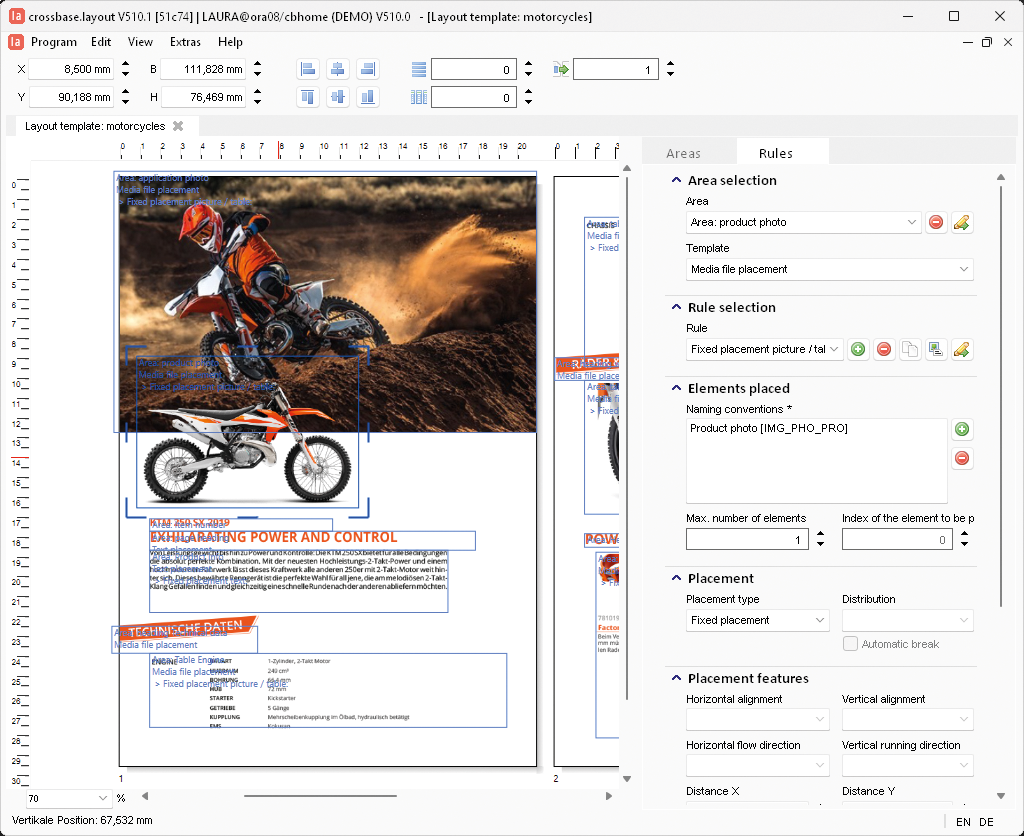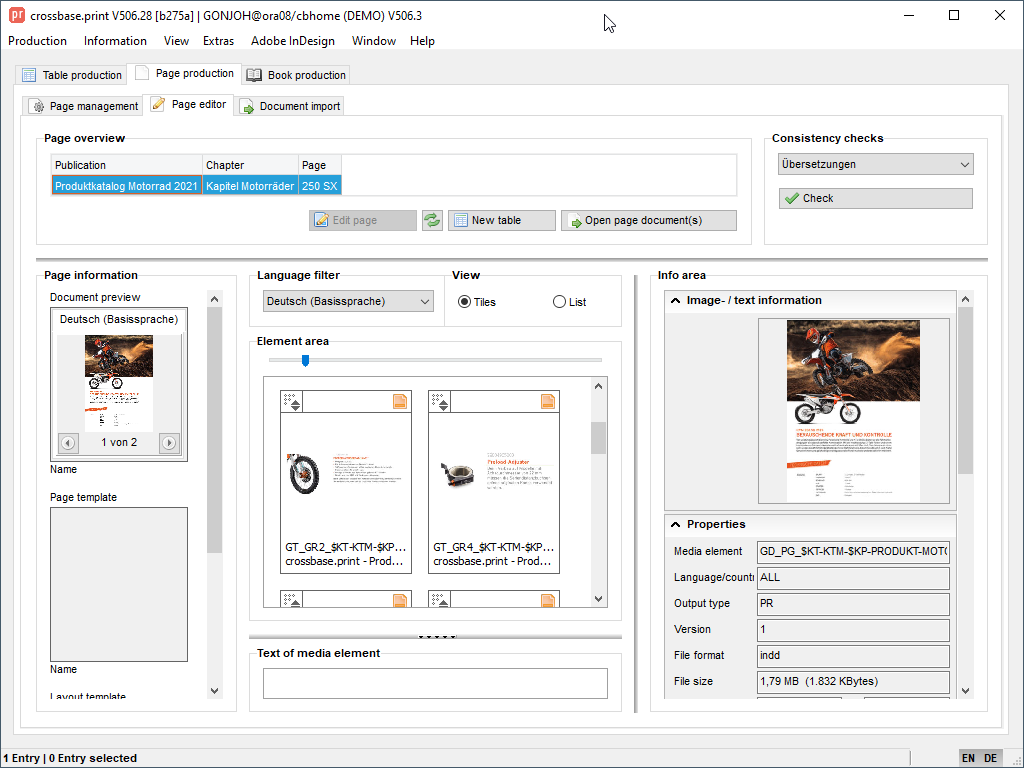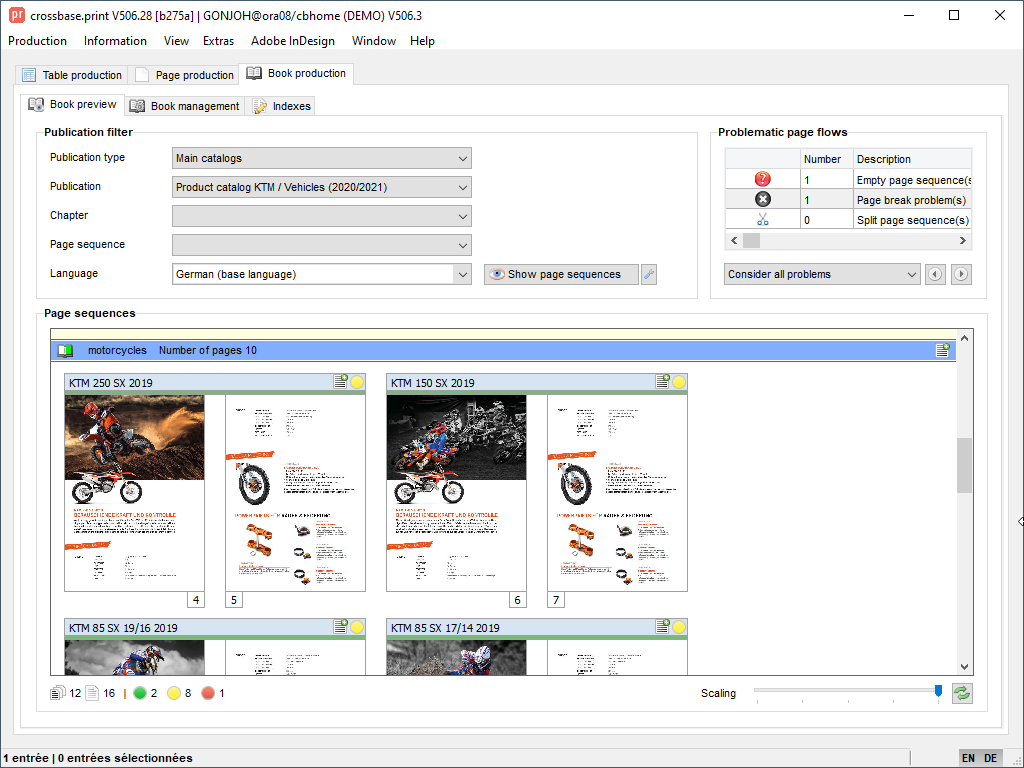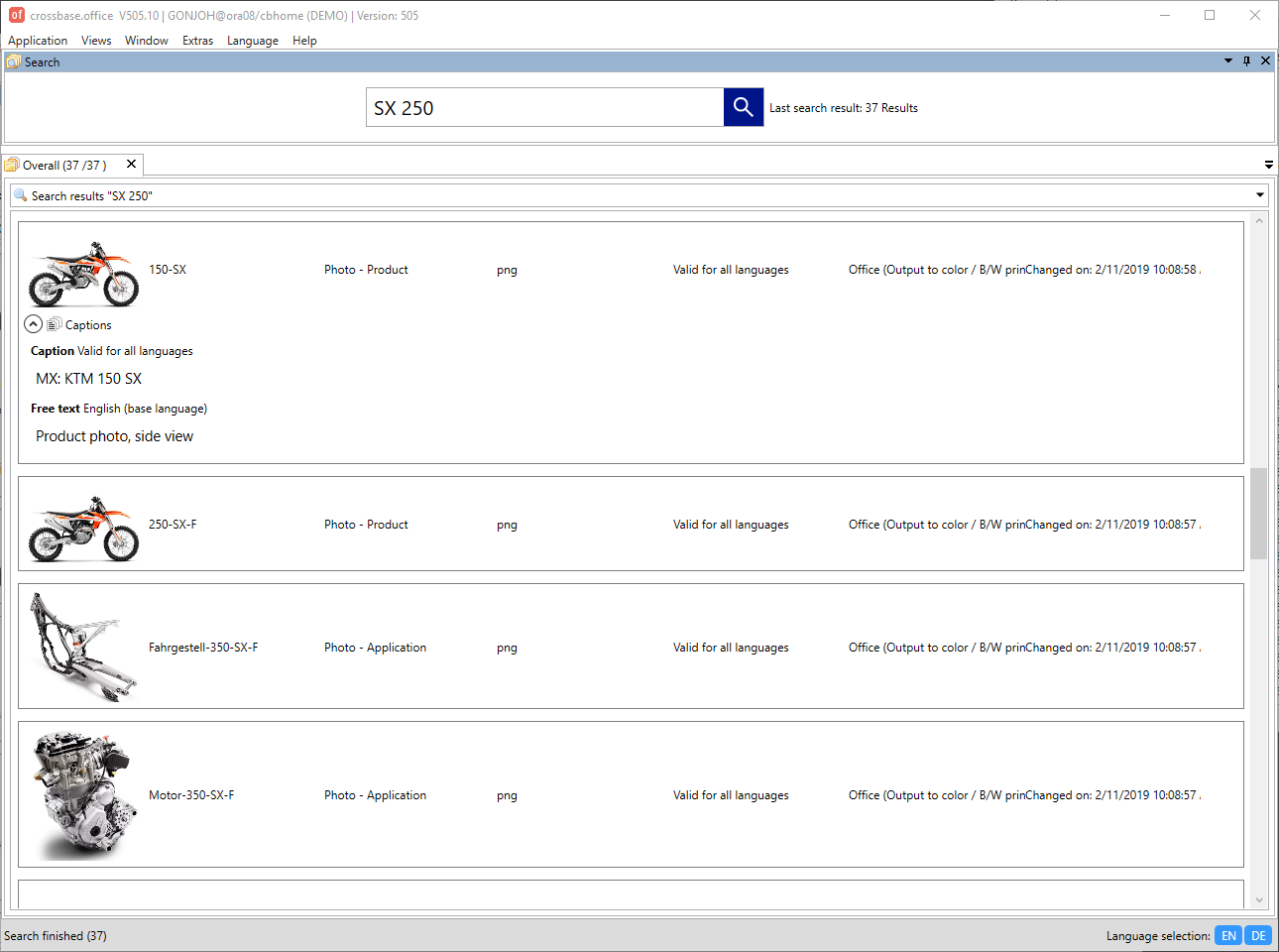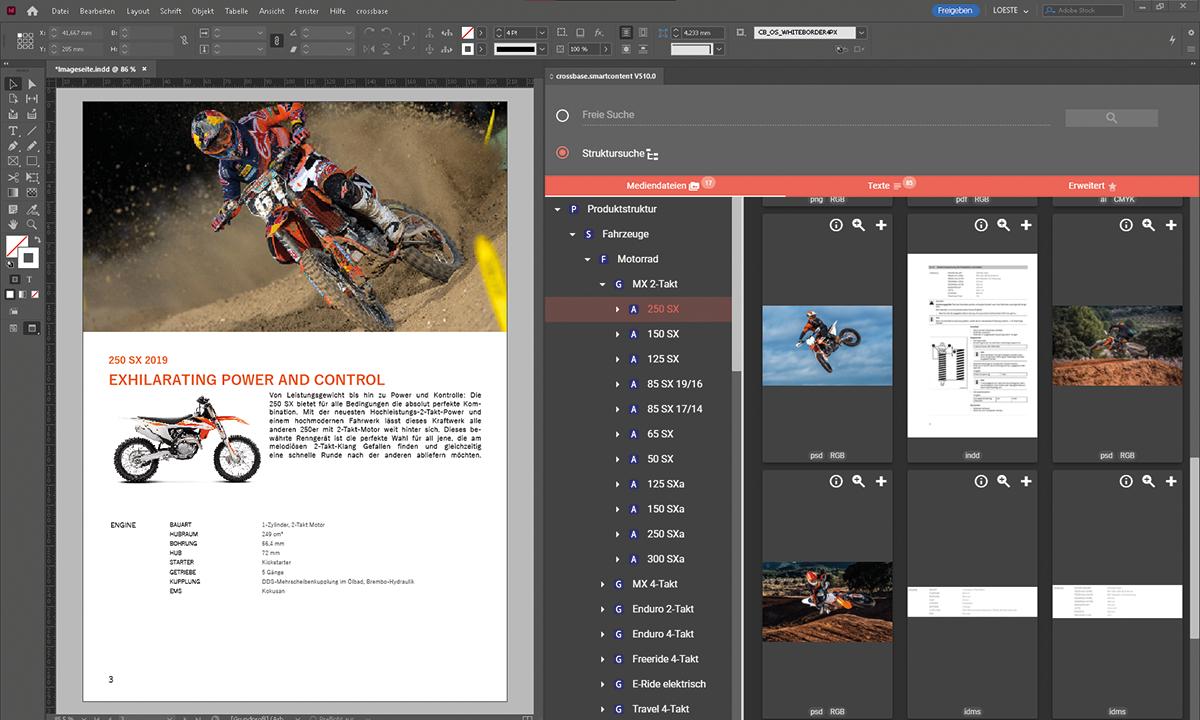
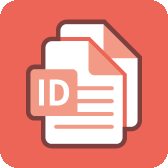
Print publishing
Automated print production with InDesign without compromising on design
Fully automatically produced InDesign pages - this is easy to realize with the crossbase print tools. Using the flexible layout kit, you can produce not just structured print publications, but also creatively complex pages, such as artwork pages and editorial pages, with the aid of a database.
Layout
Three flexibly combinable procedures are available for the layout:
Modular placement
This is used for pages with a modular layout. The positioning of the elements is automated on the basis of a layout template. Displacement mechanisms may come into play. Common use: catalogs and datasheets.
Flowing placement
This is usually used for chapters with a consistent layout throughout. Based on a predefined layout template, a flowing pagination takes place automatically. Common use: illustrated price lists.
Free placement
The positioning and formatting of the objects can be done freely in InDesign here. This approach in the interaction between crossbase and Adobe InDesign is unique. Common use: decorative pages, editorial pages and brochures.
Layout editor
The operation of the layout editor is based on the way you work with Adobe InDesign and is easy to learn. Scripting skills are not necessary. The crossbase layout editor offers a large number of pre-configured layout rules. With innovative functions such as displacement and pagination control, flexible layout templates can be created which can then be reused for similarly structured pages.
Table editor
The product tables are created in the table editor. From simple standard tables to complex matrix tables, all requirements are covered. Tables can contain characteristics, product images, texts and prices. Adjustments to the table layout can also be saved back to the database for subsequent updates and language changes. To minimize the number of table templates, complex table layout rules are possible. These include dynamic column widths, cell grouping functions, and grouping rules.
Page sequence planning
The page sequences are created in a chapter-oriented publication structure that is independent of the product structure. The assignment of content to a page can be done either by linking products or images, text and tables.
Page production and layout adjustments
For page production, the page documents as well as the production languages are selected in the page management. Afterwards, the fully automated production or the price update can be started with a mouse click.
Data sheet engine
With the data sheet engine in interaction with the template editor and the print server, masses of data sheets for all items can be generated in InDesign.
Review process
The correction process can be done with the usual PDF correction tools. For this purpose, a language-specific PDF is generated for each page, in which overflows are marked in color. The correction process is supported by the status control.
Creation of the Adobe InDesign book
When all pages of a chapter are created, they are combined into an Adobe InDesign book. To create the overall document as well as the print-ready PDF, the following book functions can be performed automatically:
Pagination; generation and resolution of page cross-references; creation of item index, table of contents and language-specifically sorted index; execution of typesetting control for left and right pages as well as the placement of a handle bar; print preparation as PDF and packaging for forwarding to the print shop; generation of page-turning catalogs (HTML) via the interface to ELKAT of the partner company OSG.
Refresh
Placed content such as texts and images can be updated subsequently with a mouse click. This means that all changes that have been made in the PIM in the meantime are adopted.
Search and selection
Via a full-text search or structured search in trees, all images, texts or even InDesign snippets (e.g. product tables from catalogs) can be selected from the crossbase database. The selection is visually supported by previews with zoom function. Additionally, metadata can be queried.
Insert and position
Clicking the plus icon will insert the selected element (image, text or snippet) into the document. Image data can be downloaded in low resolution to a local directory if required, in case access to the PIM database is temporarily not possible during further processing of the document. Text formatting can also be taken into account.
Save
The InDesign document is saved in the file directory. Any content in the document that was selected via the crossbase database will still maintain the connection to the database. Thus, it can be proven at any time where this content comes from. In order to meet this requirement, corresponding markings can be stored when placing the contents in the InDesign document so that the references can be clearly identified and traced back to the source element in the crossbase database.
InDesign plugin
It is not always the large product catalog that has to be produced automatically with standardized layout templates. For smaller projects, the InDesign plugin from crossbase is suitable. It integrates directly into the main menu of InDesign and makes the crossbase content available in a palette.
Adobe Photoshop
Also for Photoshop there is the possibility to access contents of the crossbase database via an integrated plugin.
Fully automated data sheet production
This allows you to create item-specific data sheets quickly and efficiently. Complete page spreads for entire product ranges are created on the basis of sample data - ideal for thousands of articles. Production takes place via Adobe InDesign in various languages, with only changed content being updated. The finished, language-specific PDFs are assigned to the articles and can be used in a variety of ways.
Translate
Finished documents can be translated automatically. For this purpose, the texts and images of the source language are inserted in the desired foreign language. This is automatically done congruently on the corresponding language levels. Paragraph formats assigned to text frames in the main language automatically apply to translations as well, so the formatting is preserved. The approach with language layers has the advantage that the foreign language PDF can be saved by simply selecting the language layers.
Special features of the crossbase solution
In the crossbase database, layout and content are strictly separated. Changes in those areas therefore do not affect each other.
Unlike many other systems, the layout is also divided into two components.
The layout templates contain placement rules and are linked to the content (text types and image categories) from the database.
The page document is then automatically produced in Adobe InDesign on the basis of the layout template. The page layout is saved back to the crossbase database.
Changes to content are logged in detail) and updated easily and quickly in the InDesign page document. Updates to new InDesign versions are thus quick and uncomplicated.
We respect your privacy
AThis website does not use cookies to collect visitor data or behavior!

